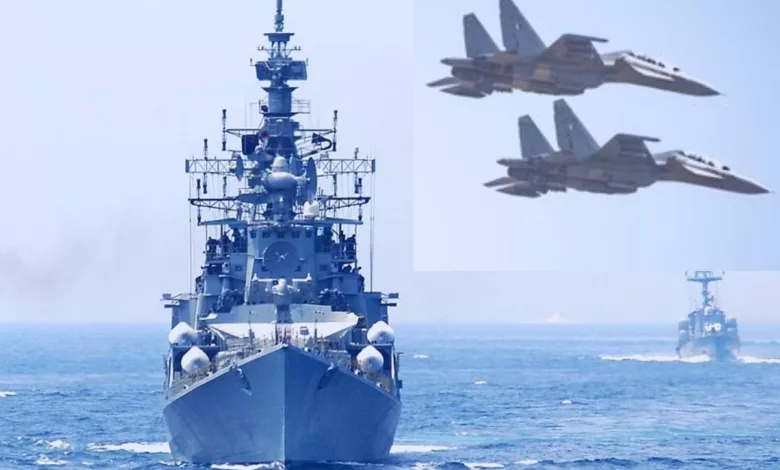The Union Cabinet Has Passed Two Proposals In Favor Of The Indian Defense Services To Push The Concept Of ‘Aatmanirbhar Bharat’.
These efforts by Union Cabinet will not only push the notion of ‘Aatmanirbhar Bahrat’ but also create several employment opportunities for the country.

The Union Cabinet has authorized the purchase of 70 HTT-40 trainer aircraft from Hindustan Aeronautics (HAL) for a staggering 6,828.36 crore. The aircraft will be handed over to the Indian Air Force over six years. HAL plans to include the Indian private sector, especially MSMEs, in the supply chain. HAL’s market cap is ₹89,806.45 crores.
According to the Defense Ministry, the HTT-40 is a turboprop aircraft with strong low-speed handling capabilities and improved training efficacy. This tandem-seat turbo trainer boasts an air-conditioned cockpit, contemporary avionics, hot refueling, running changeover, and zero-zero ejection seats. The aircraft has around 56% indigenous content, which will eventually expand to more than 60% through the indigenization of important components and subsystems.

Furthermore, the aircraft is planned to address the IAF’s shortfall of basic trainer aircraft for the training of freshly commissioned pilots. Simulators and other training aids will be included in the purchase. Being an indigenous solution, the Airplane is upgradeable to meet the Indian Military Forces’ future requirements, according to a government release by Union Cabinet.
The same aircraft was essentially taken off a decade ago due to the dismal development history, forcing the IAF to explore placing a follow-on order for another 36-38 Pilatus aircraft. Even though the follow-on order has yet to be issued, the Defense Ministry is rooted for the home-grown trainer. Nevertheless, the Cabinet sanction was 36 aircraft less than what was granted by the Defence Acquisition Council led by Rajnath Singh in August 2020, when a request to purchase 106 HTT-40 for Rs 8,722 crore was accepted. This was changed to 70 aircraft for Rs 6,800 crore two years later, in October 2022, with no justification.
While the aircraft had passed essential regulatory testing, Air Chief Marshal V R Chaudhari and his predecessor, Air Chief Marshal R S Bhadauria (RTD.), had flown it. The acquisition of two types of trainer aircraft follows an IAF proposal in 2008 when the Service started a case for the procurement of 181 basic trainer aircraft.
According to the Union Cabinet, the purchase has the potential to employ about 1,500 people directly and up to 3,000 people indirectly across more than 100 MSMEs. Additionally, the Union Cabinet mentions that the procurement of the HTT-40 gives a significant boost to the Indian Aerospace Defence ecosystem and promotes efforts towards ‘Aatmanirbhar Bharat’.

The Union Cabinet approved L&T to build 3 cadet training ships for Rs 3,100 crore.
The Union Cabinet authorized a deal with Larsen & Toubro (L&T) for constructing three cadet training ships for a cumulative cost of Rs 3,108 crore, under the Buy [Indian-IDDM (Indigenously Designed, Developed and Made)] category. These ships are expected to be delivered beginning in 2026. According to the ministry’s website, the Buy (Indian-IDDM) category refers to the procurement of items from an Indian vendor that have been indigenously designed, developed, and produced with a minimum of 50% Indigenous Content (IC) on a cost basis of the overall contract value.
Following their basic training, these ships will provide officer cadets, including women. In addition to satisfying the Indian Navy‘s future personnel needs, these ships will be used to train cadets from friendly countries to develop diplomatic ties. The ships can also be used to evacuate individuals as part of humanitarian and disaster relief missions.
The ships will get their design, manufactured, and built entirely in India at L&T’s Kattupalli shipyard near Chennai. During four and a half years, the project will employ 22.5 lakh people. This is planned to foster active engagement in Indian shipbuilding and adjacent sectors, especially MSMEs. With the majority of the equipment and systems acquired from indigenous manufacturers, these warships would be a proud flag bearer of Aatmanirbhar Bharat in line with the government’s ‘Made in India’ move, says the Union cabinet.

What is ‘Aatmanirbhar Bahrat’?
The phrase “self-reliant India” (Atmanirbhar Bharat), which is what the Indian Prime Minister Narendra Modi and his administration popularised and made popularly, refers to the nation’s ambitions for economic growth. The concept serves as a unifying framework for the Modi administration’s goals of enhancing India’s efficiency, competitiveness, and resilience while also encouraging greater participation in the global economy.
The last line.
These efforts by Union Cabinet will not only push the notion of ‘Aatmanirbhar Bahrat’ but also create several employment opportunities for the country.
Edited by Prakriti Arora




